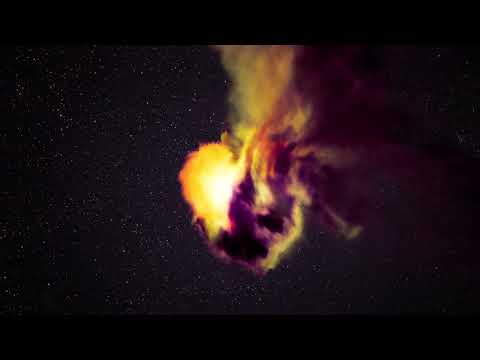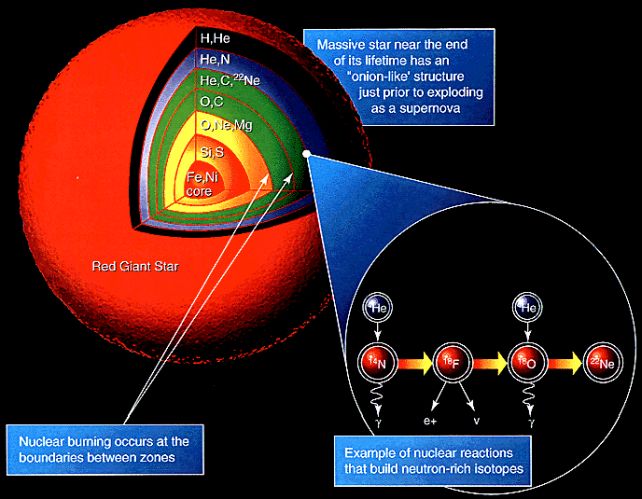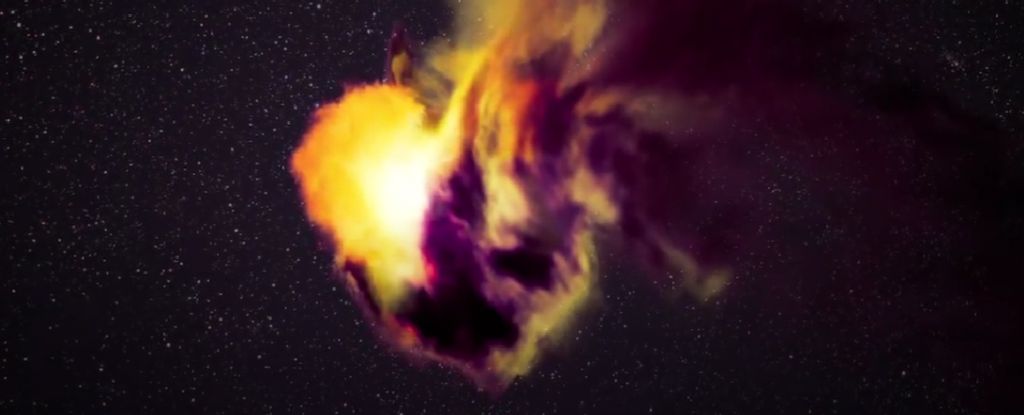A star exploding at the end of its life has rocked the cosmos like no other that humanity has ever seen.
In 2021, astronomers watched in astonishment as a supernova 2.2 billion light-years away named SN2021yfj bloomed, rich with silicon, sulfur, and argon – something never before seen in an exploding star.
This material, says a team led by astrophysicist Steve Schulze of Northwestern University in the US, constitutes the first direct evidence of the theorized concentric shells of different elements that make up the interiors of massive stars, validating the star life cycle, and expanding our knowledge about how massive stars end their lives.
Related: This Incredible Supernova Is Expanding Like a Dandelion in Space
“This event quite literally looks like nothing anyone has ever seen before,” says astrophysicist Adam Miller of Northwestern University.
“It was almost so weird that we thought maybe we didn’t observe the correct object. This star is telling us that our ideas and theories for how stars evolve are too narrow. It’s not that our textbooks are incorrect, but they clearly do not fully capture everything produced in nature. There must be more exotic pathways for a massive star to end its life that we hadn’t considered.”
 frameborder=”0″ allow=”accelerometer; autoplay; clipboard-write; encrypted-media; gyroscope; picture-in-picture; web-share” referrerpolicy=”strict-origin-when-cross-origin” allowfullscreen>
frameborder=”0″ allow=”accelerometer; autoplay; clipboard-write; encrypted-media; gyroscope; picture-in-picture; web-share” referrerpolicy=”strict-origin-when-cross-origin” allowfullscreen>
The lives of stars are powered by fusion in their cores – where pressures and temperatures are so great that atoms are mashed together to fuse into heavier elements. In massive stars, hydrogen fuses into helium, which fuses into carbon, and so forth, all the way up to the fusion of sulfur and silicon into iron.
Iron is the end of the line, because the fusion of iron requires more energy than it produces – the star’s death knell. But during the star’s lifespan, the different elements produced are theorized to form layers, like an onion, with the heaviest at the center, and the lightest – the hydrogen and helium – around the outside.
When stars explode, astronomers mostly find the signatures of these lighter elements in the ejecta, and not much that is heavier, only as far down the chain as carbon and oxygen. The domination of heavier elements in SN2021yfj suggests a much more turbulent period than usual before the final, explosive event.
“This is the first time we have seen a star that was essentially stripped to the bone,” Schulze says. “It shows us how stars are structured and proves that stars can lose a lot of material before they explode. Not only can they lose their outermost layers, but they can be completely stripped all the way down and still produce a brilliant explosion that we can observe from very, very far distances.”
 A diagram showing the layered internal structure of a star at the end of its life. (NASA)
A diagram showing the layered internal structure of a star at the end of its life. (NASA)
The period leading up to a massive star’s death is characterized by instability. The star will lose a great deal of its outer material in a series of eruptions prior to the supernova. Silicon, sulfur, and argon can only be found close to the star’s core towards the end of its lifespan, suggesting that, somehow, the star at the heart of SN2021yfj managed to lose much, much more of its mass than the normal exploding star.
Exactly how this may have happened is unknown, but the researchers suggest a scenario in which the star’s death throes gradually blast it to smithereens. As the core runs out of fuel, it continuously squeezes inward under gravity, as the outward pressure supplied by fusion wanes.
This increase in inward pressure and heat then reignites fusion in an explosive event that blows off some of the outer material. Repeated episodes of this process would have seen most of the star’s mass shucked off like a discarded coat, a shell of material expanding away from the star.
During the final explosion, the faster supernova ejecta would have caught up to and slammed into this shell, creating the brilliant light seen from billions of light-years across the Universe, the researchers say. But we’re going to need more data to be able to confirm this theory.
“While we have a theory for how nature created this particular explosion,” Miller says. “I wouldn’t bet my life that it’s correct, because we still only have one discovered example. This star really underscores the need to uncover more of these rare supernovae to better understand their nature and how they form.”
The research has been published in Nature.
